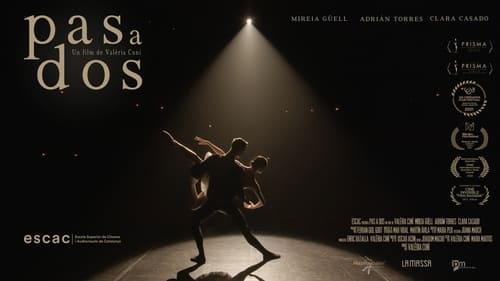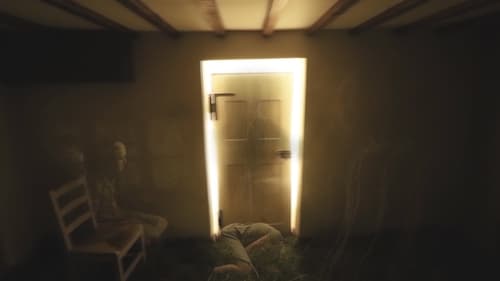Mass of Images (1978)
장르 :
상영시간 : 4분
연출 : Ulysses Jenkins
시놉시스
Mass of Images, a recorded performance that does indeed engage black stereotypes perpetuated by the American media. In the work, Jenkins appears on a set accompanied by a stack of televisions, his face obscured by a plastic mask and sunglasses, neck wrapped in American-flag-print scarf, and sporting an Adidas t-shirt underneath a bathrobe, arranged such that only the “ID” of Adidas is visible. The video cuts between this scene and examples of blackface and racist stereotyping from American films and TV. Jenkins repeats a mantra as he settles into a wheelchair and wheels himself toward center stage: “You’re just a mass of images you’ve gotten to know / from years and years of TV shows. / The hurting thing; the hidden pain / was written and bitten into your veins / I don’t and I won’t relate / and I think for some it’s too late!”

Between surrealism, unusual characters, art and magic tricks, "Swim Little Fish Swim" is a dreamlike journey from childhood to adulthood.

In Rainer Kohlberger's latest short film "The song nobody knows" everything revolves around noises. Breathing, moaning, screaming and roaring are understood in the film as primal sounds of human articulation and presented as the opposite of smooth language. In the film, for example, several well-known characters from different films appear, whose faces are obviously fake.

An experimental film comprised of Stanley Kubrick's THE SHINING played forwards and backwards at the same time on the same screen, creating bizarre juxtapositions and startling synchronicities

The video opens with a barrage of explosive imagery along with an audio track of a siren taken from the 1970s TV show Wonder Woman. The following scenes are fast paced repeated shots from Wonder Woman, with several scenes following of actress Lynda Carter as the main character Diana Prince, performing her transformative spin from secretarial role into superhero role. […] The representation of repeated transformations expose the illusion of fixed female identities in media and attempts to show the emergence of a new woman through use of technology. […] The video ends with a scene of repeating explosions that precedes a blue background with white text that scrolls upwards, delivering a transcription of lyrics to the song ‘Wonder Woman Disco'.

CGI collage short film originally premiered as part of the 'Extinction Renaissance' exhibition at the Loyal Gallery in Stockholm.

The goddess Diana and her two attendants traverse the rugged terrain of Idaho’s Sawtooth Mountains in pursuit of the elusive wolf. An Engraver (Matthew Barney) furtively documents their actions in copper engravings and provokes a series of confrontations. The characters communicate through dance, letting movement replace language as they pursue each other and their prey.

Jim Moir (aka Vic Reeves) explores Video Art, revealing how different generations ‘hacked’ the tools of television to pioneer new ways of creating art that can be beautiful, bewildering and wildly experimental.

Köner uses sequences of images from webcams as raw material. People and their vehicles appear acoustically, but not visually. The shift from day to night and the influence of the weather gives motion to the segments. He condenses a total of 3,000 individual web images taken from the Internet into one scene. Despite the cinematic motion of the image, it seems like a still photo.

White Homeland Commando takes the familiar terrain of network action drama and tilts the playing field. Reminiscent of today's popular reality-based cop shows, White Homeland Commando offers a straightforward story: four members of a special police unit investigate and infiltrate a New York-based white supremacist organization. But that is where the commonplace ends. The teleplay is shot and edited in a highly textured visual style, the colors are subdued yet somehow garish, and the sound is deliberately just out of sync with the speaker's lips. Occasional static combines with jumps in the plot — the editing is reminiscent of a television viewer flipping channels.

In his book "1984", George Orwell saw the television of the future as a control instrument in the hands of Big Brother. Right at the start of the much-anticipated Orwellian year, Paik and Co. were keen to demonstrate satellite TV's ability to serve positive ends-- Namely, the intercontinental exchange of culture, combining both highbrow and entertainment elements. A live broadcast shared between WNET TV in New York and the Centre Pompidou in Paris, linked up with broadcasters in Germany and South Korea, reached a worldwide audience of over 10 or even 25 million (including the later repeat transmissions).

For this video, Palisades in Palisades, 2014, Rose wanted to expand both her conceptual concerns and her cinematographic repertoire. “I was learning how to make a shot in relation to the content,” she explains, “and how the shots were metaphors for pure sensual material.” The artist accomplished this by using a remote-control camera that could zoom from 200 feet away all the way up to the pores in an individual’s skin. She chose to shoot in New Jersey’s Palisades Interstate Park, a onetime Revolutionary War battleground turned landscaped circuit park that sits atop an ancient cliff.

Enigma is something of a more glamorous version of White Hole, with a wide variety of elaborate textures (often composed of iconographic and religious symbols) converging towards the centre of the screen.

Furio’s Furious Fragments & Friends - Furio Jesi (1941 Turin -1980 Genoa), enfant prodige moving between a plethora of disciplines – egyptology, history of religions, German philology, literary criticism - passed away prematurely, not without leaving bright fragments which throw light on mechanisms beneath many socio-cultural practices, for instance regarding cultural belonging, the functions of myth in modern society. He saw kind of “mythological machines” at work underneath our cultural production of meanings, historically determined, departing from a void, something that is still in culture but as residue, a missing link to an alleged authentic experience nowadays compromised up to the point to became just rhetoric, a byword, which is in no way neutral, but a tool, a macchina, for maintaining the status quo and serving the power apparatus. As in the case of holidays, celebrations and festivals.

Mireia has just come out of a toxic relationship that prevents her from enduring physical contact when she is offered the lead role of "Sleeping Beauty" at the ballet school where she attends, and has to dance with the Blue Prince.

The video debut of experimental musicians and culture jamming artists Emergency Broadcast Network.

With Grosse fatigue, Camille Henrot set herself the challenge of telling the story of the universe’s creation. Indeed, the fatigue is grosse, or hugely weighty, she who has condemned herself to carrying the weight of the world on her shoulders like the Titan Atlas. But aren’t such dark and lonely burdens meant to become as light, as beautiful and fragile as soap bubbles in the hands of an artist? Holding the world in the palm of her hand… it floats effortlessly at the palm’s surface as though, imbued with magical powers, the artist has truly resurrected the youth of humanity from the depths of the ages – bringing to life the magisterial dawn we had thought too far off to ever be seen again, yet which captivates us as easily as a magic lantern does a child.

The Machine That Killed Bad People is about the cultural and political history of the Philippines leading up to the overthrow of President Ferdinand Marcos in 1986. It also addresses the role of electronic media in the struggle for power, and more broadly, American intervention in the Third World. Using a structure that emulates the way television news programs construct meaning through fragmentation, the tape interweaves clips of Filipino activists and reporters, a fictional television anchorwoman and correspondent, commentary by independent filmmaker Trinh T. Minh-ha, Fagin's off-camera voice and script, and anonymous excerpts from commercial television.

Mass of Images, a recorded performance that does indeed engage black stereotypes perpetuated by the American media. In the work, Jenkins appears on a set accompanied by a stack of televisions, his face obscured by a plastic mask and sunglasses, neck wrapped in American-flag-print scarf, and sporting an Adidas t-shirt underneath a bathrobe, arranged such that only the “ID” of Adidas is visible. The video cuts between this scene and examples of blackface and racist stereotyping from American films and TV. Jenkins repeats a mantra as he settles into a wheelchair and wheels himself toward center stage: “You’re just a mass of images you’ve gotten to know / from years and years of TV shows. / The hurting thing; the hidden pain / was written and bitten into your veins / I don’t and I won’t relate / and I think for some it’s too late!”

Confined to an endlessly burning waiting room, a dying sedentary woman experiences herself blurring in and out of her body. In her last remaining fragments she tries to make amends with her spirit before her remaining fragments either decay or create.

Boys will be boys.









